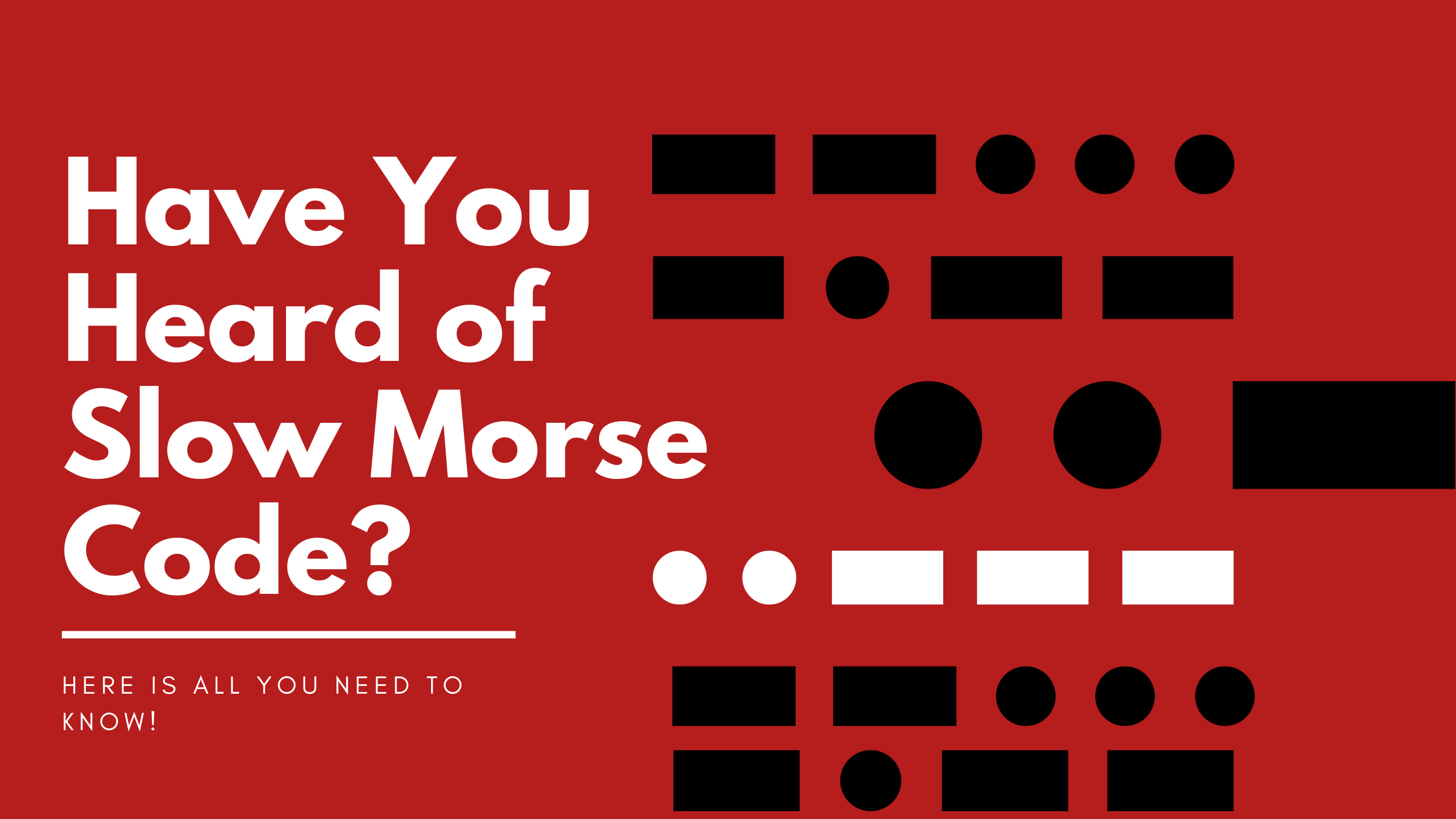
We often invite our community to write in and let us know about any interesting events. We got a great email from Mark who runs a slow morse code net every week!
We will share his details in next week’s newsletter. Stay tuned.
Some of the younger folk in the office said, slow morse code? what is that? So we thought it was high time we created a blog on this very topic.
So, what is Morse code? It is a communication system developed in the early 1800s, that involves creating messages, where each letter of a word is sent as a sequence of dots and dashes. This system is transmitted via sound or visual signals, typically with the help of devices like telegraphs, lamps, or radios. Slow Morse code, often referred to as “QRSS” (which stands for “QR” for “to receive slower,” and “SS” for “to send slower”), is a variant of traditional Morse code designed for low-speed communication and radio enthusiasts. Here’s how it works, how to access it, and why people enjoy this hobby:
How Slow Morse Code Works
- Encoding: Slow Morse code uses the same fundamental principles as traditional Morse code. Letters, numbers, and symbols are represented by combinations of short signals (dots) and long signals (dashes).
- Speed Reduction: The primary difference is in the speed of transmission. While traditional Morse code can be relatively fast, slow Morse code is intentionally slowed down. Each character can be extended to several seconds, making it much more accessible for newcomers and hobbyists.
- Transmission: Slow Morse code is transmitted using radio waves or light signals. Radio enthusiasts often use specialized devices and software to encode and decode these signals.
- Decoding: The receiver uses a device, like the Tecsun Radios Australia SDR (Software-Defined Radio), to capture the radio signals and convert them into visual or audible Morse code.
Accessing Slow Morse Code
- Equipment: To access slow Morse code, you need a suitable radio receiver. Tecsun Radios Australia SDR is an example of a device that can be used for this purpose. It allows you to tune into specific frequency bands.
- Tuning In: With your SDR, you can select the frequency range where slow Morse code transmissions are taking place. Radio hobbyists often monitor certain bands allocated for amateur radio Morse code communication.
- Waterfall Display: The Tecsun Radios Australia SDR and similar devices often include a “waterfall display.” This display shows a visual representation of the spectrum over time, making it easier to identify and decode slow Morse code signals. Operators can visually follow the patterns of dots and dashes on the display.
Why People Enjoy Slow Morse Code as a Hobby
- Technical Challenge: Slow Morse code provides a technical challenge for enthusiasts. It requires understanding of radio equipment, propagation conditions, and signal decoding.
- Nostalgia: Many hobbyists are drawn to Morse code due to its historical significance in radio communication.
- Community: Slow Morse code has a dedicated community of enthusiasts who share information, tips, and participate in events Just like Mark’s local net we will share with you in next week’s Newsleter.
- Relaxation: The slow pace of Morse code can be calming for some people. It allows for a more relaxed and methodical approach to communication.
- Unique Skills: Learning Morse code is a unique skill, and many enjoy the sense of accomplishment that comes with mastering it.
Slow Morse code is a variant of Morse code that is enjoyed by radio enthusiasts. The slow pace, technical aspects, and sense of community make it an attractive hobby for those interested in both history and modern radio technology. The ability to watch the whole band segment on a waterfall display aids in decoding the signals, adding an extra layer of enjoyment for enthusiasts.



It’s really very difficult in this busy life to listen news on Television, so I just use world wide web
for that reason, and take the latest news.
You should try listening to shortwave, where you can hear the news live as it happens, not the sanitised version.